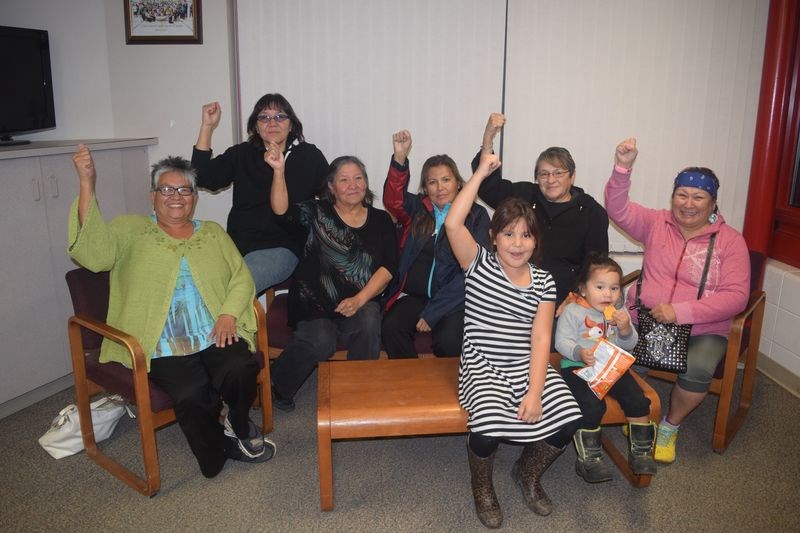A group of residents of Cote and Keeseekoose First Nations left for North Dakota today in support of the Standing Rock Sioux Tribe who are trying to stop the Dakota Access Pipeline.
In what had been called the largest protest by Indigenous Nations in recent history, for weeks thousands of people from many nations, including Canada, have been gathering in the southern part of North Dakota south of Bismark where the pipeline is to pass by the reservation.
“We expect to be about 30 people,” Margaret Cote said last week while she and other members of her committee were planning a bingo fundraiser that was held at Cote First Nation on Friday. The group plans to return after having spent two days in North Dakota.
“We are protectors of the water and the land,” Cote said. “Nothing can survive on earth without water.”
Cote said that she and other members of her group will be going to the campsite where they will be praying and singing at peaceful protests, some distance from the “front line” near the construction site.
“It will be very peaceful,” she said, adding that Robert Severight, who is well-known in the area for his singing and drumming, is expected to take his hand drum along with him to the protest site.
The oil pipeline construction is disrespectful to sacred burial grounds, she said, adding that Standing Rock is the gravesite of Sitting Bull, a well-respected Sioux chief.
These demonstrations are important because natural resources are disappearing faster than they are being replenished, said another member of the group. “Today (October 11) is an international day of prayer and action and five pipelines were stopped.”
“We are hoping all people will get to respect the earth,” Cote said.
These protests are history in the making, said Helene Cote.
“It’s all about the children,” a member said. “We are doing this for the future generations.”
When asked if they do not see a conflict in protesting an oil pipeline while they are burning oil products on their seven-hour drive to the site, a member of the group said that they are not protesting the use of oil, but where the oil pipelines are being laid.
Placing the pipelines where they are proposing to place them is not being respectful to the treaties, a member said.
Margaret Cote referred to a Sioux prophecy which mentions a “black snake” that needs to be stopped and easily compared the “black snake” to an oil pipeline.
To help pay expenses of the group, a fundraising merchandise bingo was held at the Cote Hall on October 2, and the second one was held Friday. Members of the group have donated prizes and Kamsack businesses were asked to contribute to the prize table.
Each member of the group will be wearing a blue-coloured hoodie that represents the colour of water and each one contains the slogan “Water is Life” as well as “Cote First Nation.” The group will also be waving a Cote First Nation flag.
“When you're driven by money and when you're driven by greed, the water, the environment and the Indigenous peoples and Indigenous lands; those things don't matter to them,” David Archambault, chair of Standing Rock Sioux Tribal Council, told the CBC recently. “Any act of violence hurts our cause and is not welcome here.”



